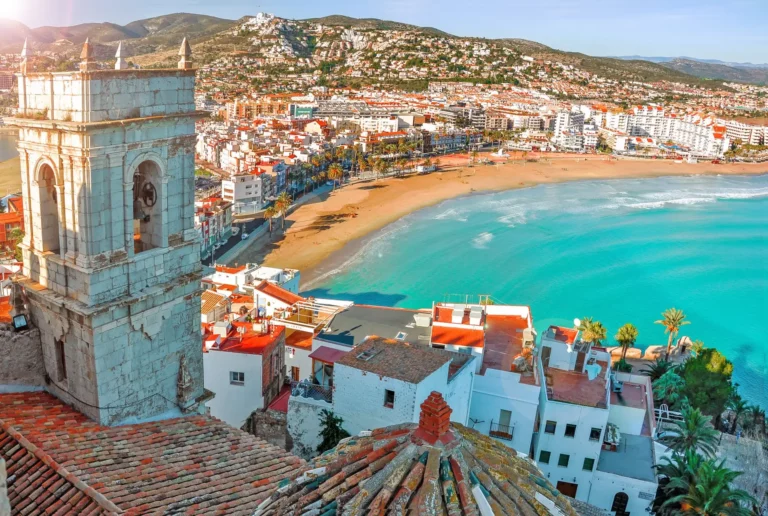Valencia, the jewel of the Spanish Mediterranean, captivates visitors with its vibrant culture, stunning architecture, and delectable cuisine. However, just like any travel destination, Valencia has its highs and lows. In this exploration, we delve into the pitfalls and challenges of choosing the worst time to visit this enchanting city.
Valencia basks in a Mediterranean climate, offering warmth and sunshine for a significant part of the year. However, choosing the wrong time to visit can turn your dream holiday into a less-than-pleasant experience.
Summer Sizzles: Venturing to Valencia during the scorching summer months, from June to August, may seem enticing for sun-seekers. However, the blistering heat can be overwhelming, with temperatures often exceeding 90°F (32°C). Navigating the city’s outdoor attractions becomes a challenge, as the intense heat can sap your energy and enthusiasm.
To make matters worse, the popular beaches, such as Malvarrosa, transform into crowded ovens, making it difficult to find a tranquil spot to relax. Transitioning from one attraction to another becomes a test of endurance under the unforgiving Spanish sun.
Fall Follies: While autumn often brings relief from the summer heat, late September to early November in Valencia can be a tricky period. Sudden rain showers become a regular occurrence, dampening outdoor activities and making it challenging to explore the city comfortably. The cultural festivals, a highlight of Valencia, might lose some of their charm when experienced in less-than-ideal weather conditions.
Cultural Conundrum: Missed Festivals and Events
Valencia is renowned for its lively festivals and events, each offering a unique glimpse into the city’s rich cultural tapestry. Unfortunately, choosing the wrong time to visit may mean missing out on these vibrant celebrations.
Las Fallas: A cultural extravaganza celebrated in March, Las Fallas is one of Valencia’s most iconic festivals. The city bursts into a riot of color, with elaborate sculptures adorning the streets. However, arriving outside of this period means you’ll miss the spectacle and the electric atmosphere that accompanies it.
La Tomatina: For those who relish the idea of a tomato fight, La Tomatina in August is an event not to be missed. However, visiting during other months will leave you with nothing but the remnants of squashed tomatoes in the city’s historical streets.
Transportation Troubles: Navigating the City Gridlock
Valencia boasts an efficient transportation system, but timing plays a crucial role in how smoothly you can traverse the city.
Summer Standstills: The summer influx of tourists transforms Valencia into a bustling metropolis, leading to increased traffic congestion. Exploring the city by car can become a tedious affair, with crowded streets and limited parking spaces. Public transportation, though efficient, might also face delays due to the surge in passengers.
Festival Frenzy: During major festivals, the city witnesses a surge in visitors, creating additional transportation challenges. Buses and metro services may be overcrowded, making commuting an uncomfortable experience. The streets, adorned with festival decorations, might look enchanting, but the logistics of navigating through the festival fervor can be overwhelming.
Accommodation Anguish: Booking Woes and Price Peaks
Securing comfortable and reasonably priced accommodation can become a headache if you choose the worst time to visit Valencia.
Summer Splurge: Summer, being the peak tourist season, witnesses a surge in demand for hotels and rental accommodations. This heightened demand often leads to inflated prices, making it challenging to find affordable options. Planning a spontaneous trip during these months might leave you scrambling for a place to stay that doesn’t break the bank.
Festival Frenzy Fallout: Major festivals, such as Las Fallas, attract hordes of visitors, creating a spike in accommodation costs. Booking a hotel or rental during these events can be an expensive affair, and availability becomes a genuine concern. Planning well in advance becomes crucial to secure a comfortable stay without burning a hole in your pocket.
Making the Most of Your Visit
Despite the pitfalls of choosing the worst time to visit Valencia, strategic planning can help you make the most of your trip.
Optimal Timing: Consider visiting during the shoulder seasons—spring (April to May) and early fall (September to October). The weather remains pleasant, and you can still experience the city’s cultural events without the drawbacks of extreme heat or rainfall.
Cultural Calendar Check: Plan your trip around Valencia’s cultural calendar to coincide with festivals like Las Fallas or La Tomatina. This ensures you get to witness the city in its full glory, immersed in the joyous celebrations that define its identity.
Transportation Tactics: To navigate the city efficiently, use a combination of public transportation and walking. Valencia’s compact layout makes it easy to explore on foot, and public transit options offer a convenient way to reach attractions without the hassle of traffic and parking.
Accommodation Alternatives: Explore accommodation options beyond the city center to find more affordable choices. Valencia has well-connected neighborhoods that provide easy access to the city’s main attractions while offering a respite from the tourist crowds.
Conclusion
While there may be a worst time to visit Valencia, armed with the right information and strategic planning, you can turn potential pitfalls into opportunities. From avoiding scorching summers and festival frenzies to optimizing transportation and accommodation choices, your Valencia adventure can be a memorable experience with the right timing.
As you plan your trip, consider the cultural calendar, climate, and logistical challenges to ensure a seamless exploration of this Spanish gem. Valencia’s allure is timeless, and with a bit of foresight, you can unlock the city’s magic, creating memories that will last a lifetime.
